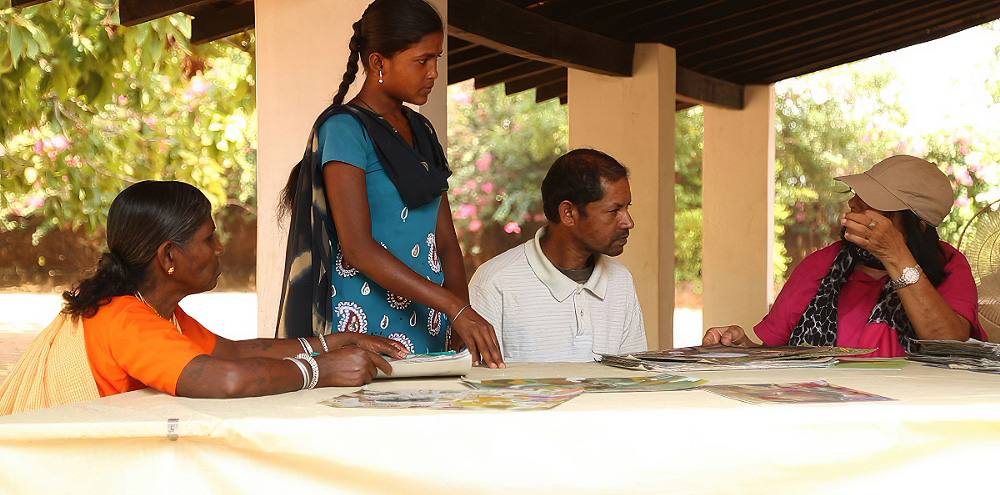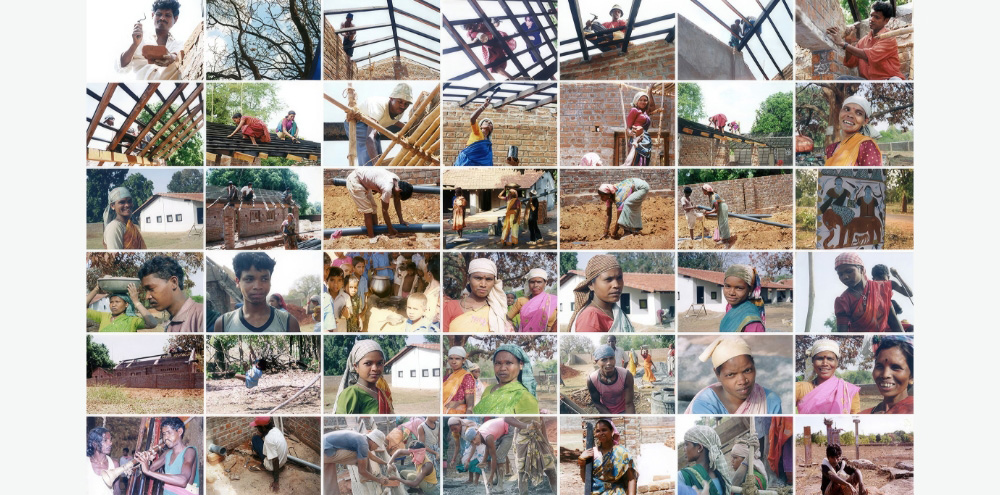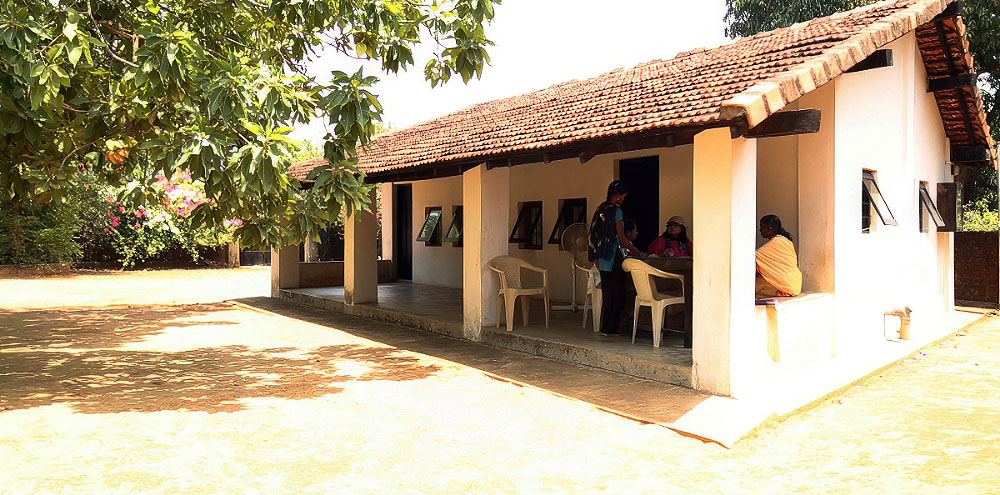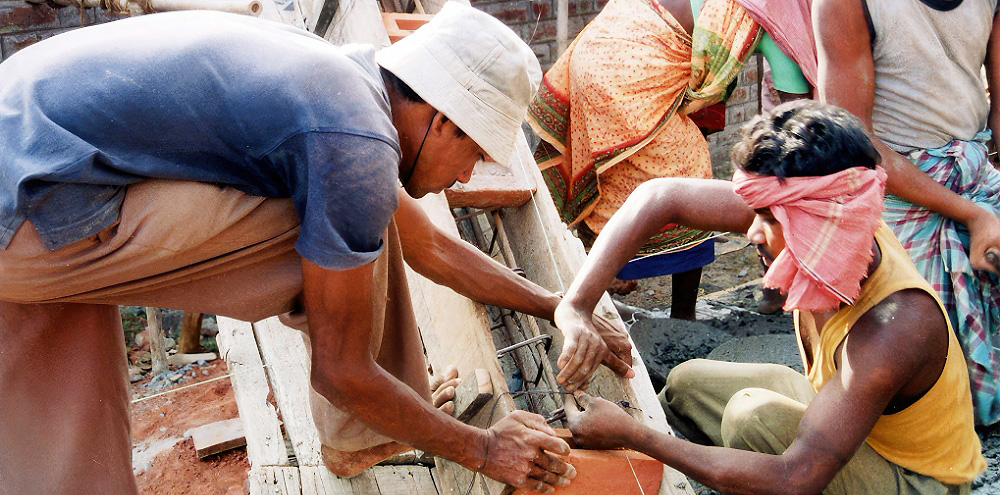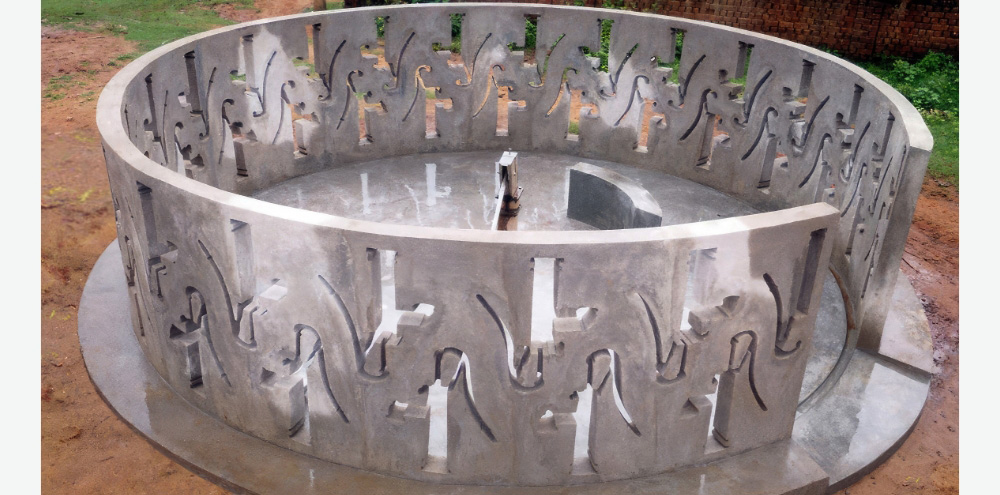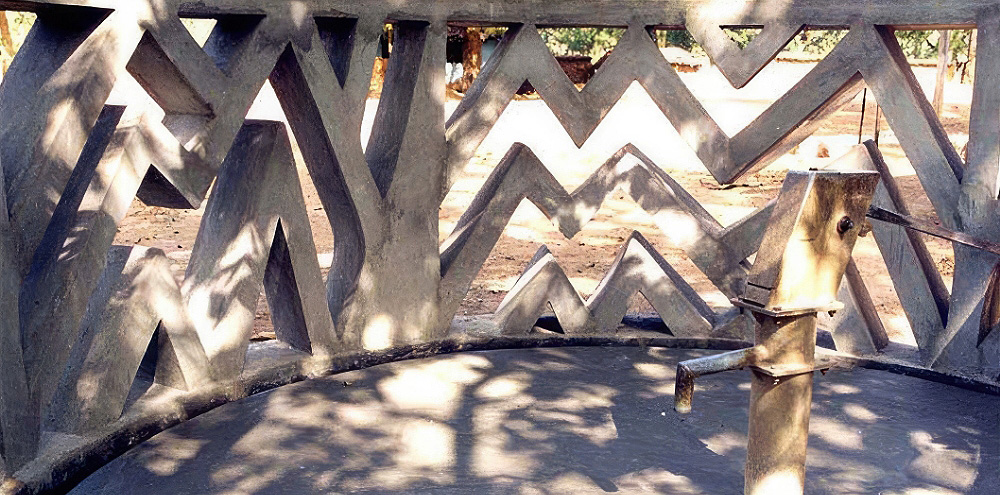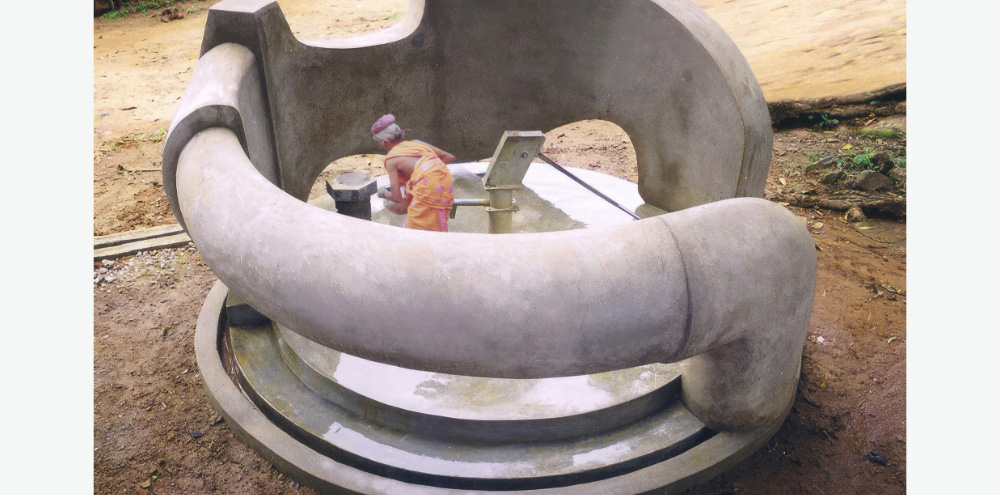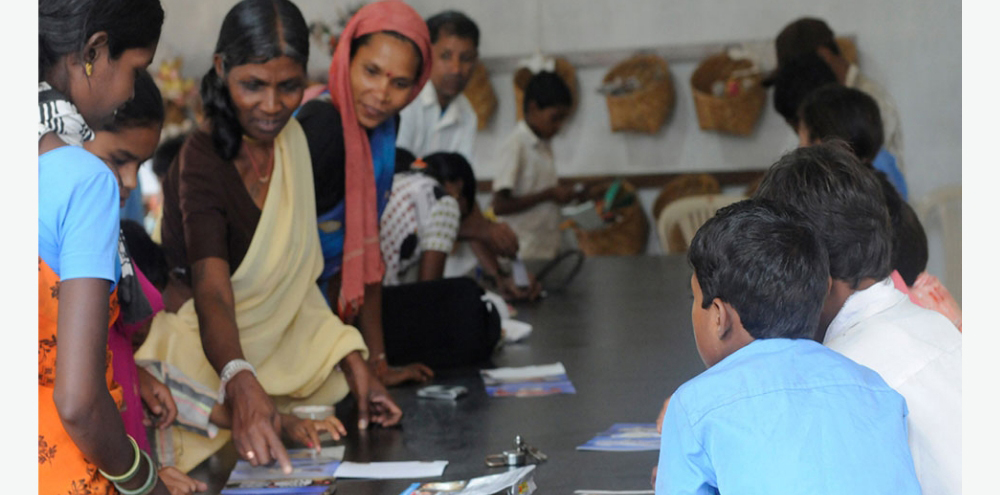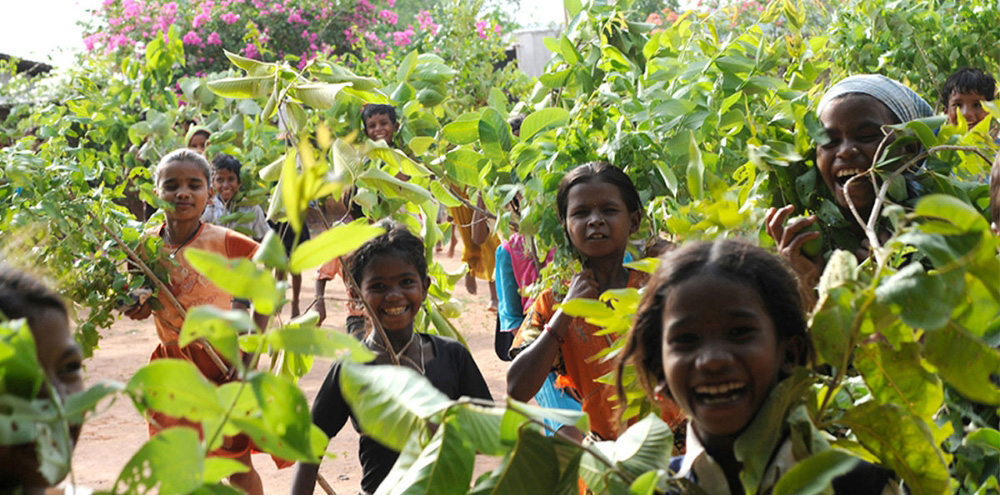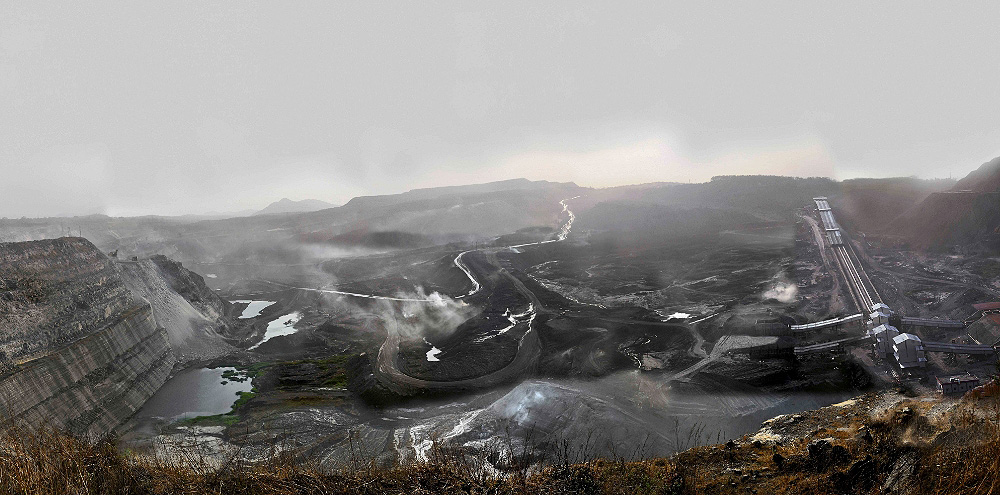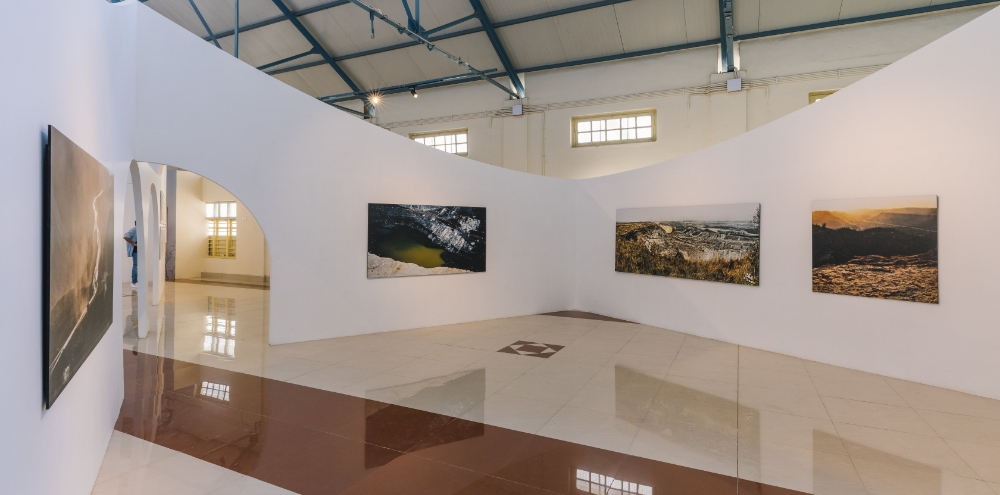Community and Collaboration: Navjot Altaf
As the histories of modern and contemporary Indian art have largely been based around the development of art schools in India, Indigenous practitioners associated with traditional art forms for generations have historically been left out of mainstream narratives. Over the decades, however, a number of artists have taken it upon themselves to develop a more inclusive approach towards how we might understand contemporary art. These include the modernist J Swaminathan (1928–1994), recognised for integrating Indigenous and contemporary art at Bharat Bhavan in Bhopal, contemporary artist Gauri Gill (b.1970) who collaborates with Indigenous artists as part of her photography practice and Navjot Altaf (b. 1949), commonly referred to as Navjot, who is known for her works in dialogue with practitioners belonging to Bastar, Chhattisgarh, central India.
Let’s look closely at Navjot’s practice, focussing on her engagements in Bastar.
Engagements in Bastar
Navjot lives between Mumbai and Bastar, seeking to bridge the divide between the urban and the rural in her own life and artistic practice. Born just a few years after India gained independence from British rule, her career has spanned four decades and encompasses painting, sculpture, installation, public art and video. Like many artists of her generation, she presents her work regularly in galleries and museums in urban India and abroad. Alongside her conventional practice, she also creates site-specific functional work with and for the Adivasi or Indigenous people in and around Bastar.
In 1997, Navjot met artists Rajkumar Koram, Shantibai, Raituram, Kabiram, Ghessuram and Gangadevi at Shilpi Gram, an institution conceived and built by Adivasi sculptor Jaidev Baghel (1949–2014), with the aim of encouraging collaborations between local and visiting artists from across the world. While working side-by-side in a workshop environment, they attempted to create a space for dialogue across social and economic backgrounds.
Since then, Navjot has been working with artists, community members, forest officials and even the local government office (Nagar Palika) in Bastar, co-founding Dialogue Interactive Artists Association (DIAA), an artist-run collaborative organisation.
DIAA initiated two major projects in Bastar: the revolution of Nalpar (water pump sites) and Pilla Gudis (temples for children). Let’s now examine some of these works closely.
Nalpar: Honouring Women’s Work
The Nalpar projects stem from Navjot’s commitment to feminism, and seek to transform and beautify local water pump sites as water-carrying has exclusively been women’s work in the region. The first Nalpar was completed in 2001, and since then, seven others have been created. Each Nalpar is a large concrete platform that enables women fetching water to interact with each other and serves the practical purpose of draining well water through trenches (hand pump sites are often in states of disrepair and drain poorly, leading to stagnant water that can breed malaria among other diseases). The high walls of the Nalpar give women privacy from the male gaze and the form offers a place to keep vessels while collecting water to reduce back strain. Beyond social and functional components, the Nalpar features motifs that are relevant to community life, for instance, pots used to carry water.
Let’s now turn to the second site-specific project that the artists undertook in Bastar.
Pilla Gudis: Reinventing Childhood
Pilla Gudis or temples for children are imagined as spaces for children to gather and play, outside of schools and formal adult-led gatherings. These structures also host informal art education workshops and opportunities to explore community traditions. The Pilla Gudis mark two important innovations. Firstly, they prioritise aesthetic knowledge over intellectual learning. Secondly, they focus on children as being key to their development, basing their designs on children’s drawings. This challenges a key hierarchy of age in most families and communities. Moreover, even as many contemporary artists maintain an engagement with issues of social justice, certain goals of the DIAA projects — to empower traditionally marginalised communities and create social change — set them apart from much of the artwork we’ve looked at already in this Course.
In this regard, let’s consider Navjot’s work Soul Breath Wind, a two-channel video that addresses the tragic consequences of reckless mining in southern Bastar and northern Chhattisgarh.
Soul Breath Wind: Voices from Bastar
As we can see from the stills below, Soul Breath Wind (2015) is a simultaneously beautiful and haunting video which draws from Navjot’s research and understanding of the socio-political dynamics of Bastar. The video pans across decimated hills and rivers which are so polluted that they have taken on strange colours. Voiceover from the local communities emphasises how the local government’s collusion with the mining industry has sped up environmental ruin and harmed local economies that rely on farming and forest products. A scene filmed at night shows a ban placed on a festival celebrating nature in fear of the possible attacks by Naxalites, a Maoist group that supports Indigenous communities’ struggle for land rights. The work addresses themes of resistance and the inequities of life in Bastar, and endeavours to share voices from the community directly. Unlike Nalpar and Pilla Gudi, which are site-specific and collaborative projects, Soul Breath Wind is attributed solely to Navjot and may be presented in a conventional space such as a gallery or museum. You can watch a short clip of the film here.
We can see how the artist’s approach changes based on a difference in context. This project reflects a more conventional approach to social justice issues, which can effectively educate a broader public on societal problems that may not get enough attention.
Navjot’s work in Bastar brings to the fore many critical questions that we can raise regarding collaborations between contemporary artists and Indigenous communities. What does it mean for contemporary artists to create works for and in communities they do not belong to? Are Indigenous artists afforded the same level of recognition as their collaborators? How can we broaden our own individual views of who we consider to be contemporary artists? On the other hand, we might also consider how these collaborations highlight the use of artistic practices to catalyse social and economic change, while also helping to critically challenge canons within the field of modern and contemporary art.
In this Topic, we look at Navjot Altaf’s unique artistic practice that involves creating community-focused artworks. Learn about more artists who have engaged with Indigenous communities in unique ways through the links below!


